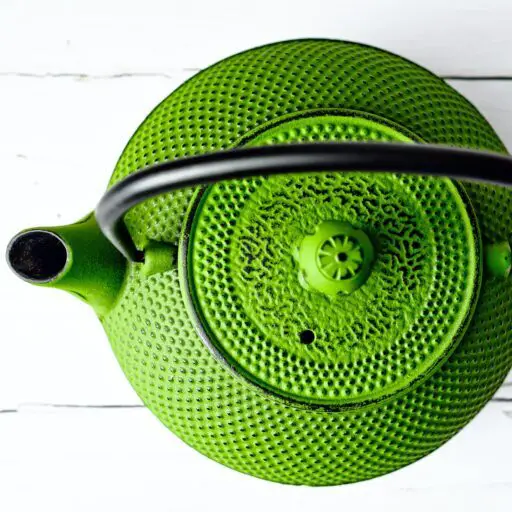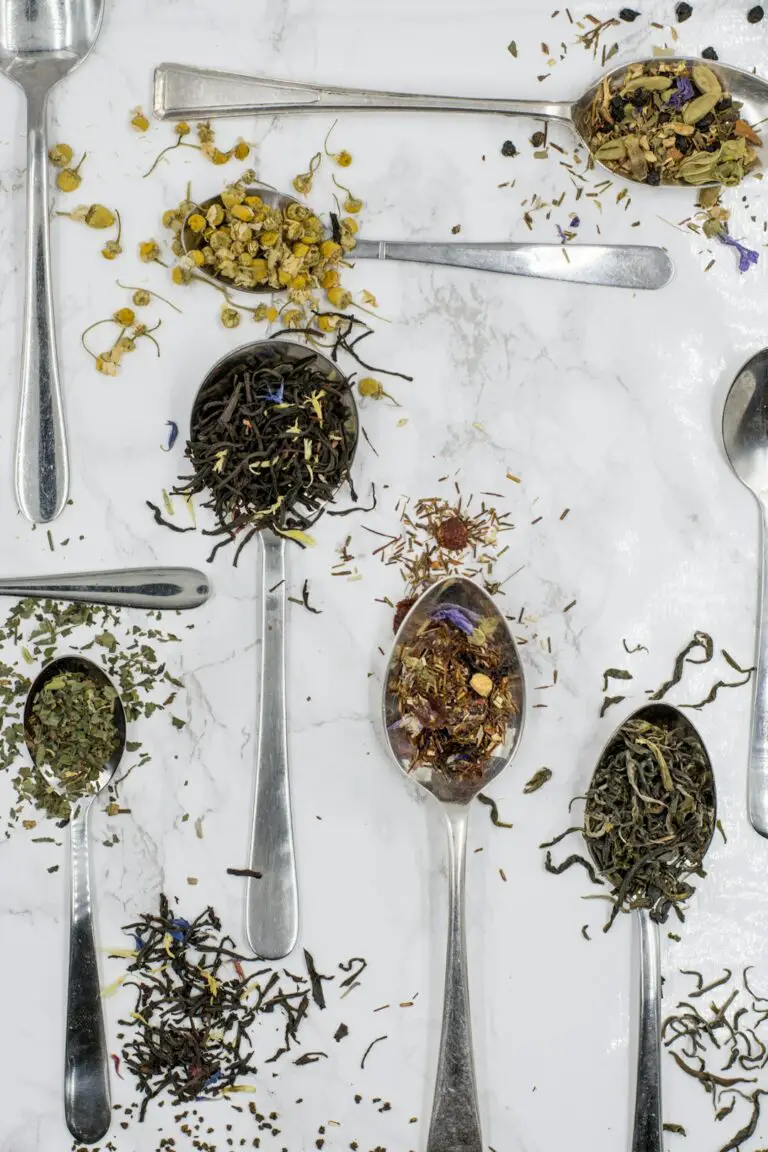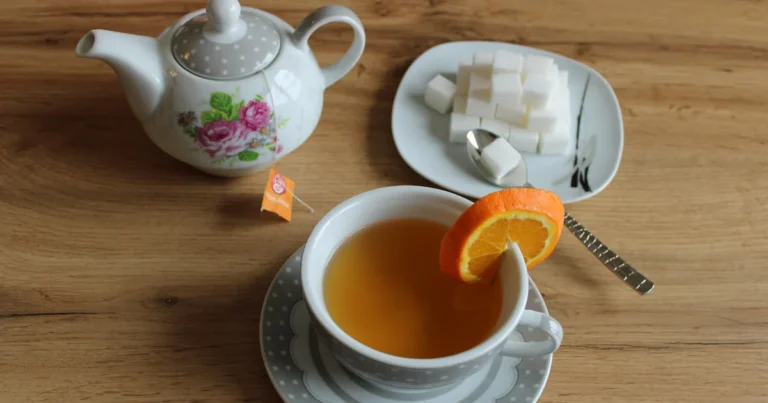Support our educational content for free when you purchase through links on our site. Learn more
What Is the No 1 Tea in the World? Discover the Top 10 Teas (2025) 🍵
Ever wondered which tea truly deserves the title of the world’s No. 1? Is it the robust black teas that fuel millions every morning, the vibrant green matcha capturing health-conscious hearts, or perhaps a rare, aged pu-erh with centuries of history steeped into every leaf? At Tea Brands™, we dove deep—tasting, researching, and unraveling the complex story behind the planet’s most beloved brews. Spoiler alert: the answer isn’t as simple as you might think!
From the misty hills of Darjeeling to the bustling tea stalls of Istanbul, tea’s global journey is as rich and varied as its flavors. We’ll explore the history, health benefits, brewing secrets, and even the sustainability behind the No. 1 teas. Plus, our expert tasters reveal their top picks and share insider tips to help you find your perfect cup. Ready to sip your way to tea enlightenment? Let’s steep in!
Key Takeaways
- No single “No. 1 tea” exists globally—popularity varies by culture, health trends, and personal taste.
- Black tea dominates in volume and tradition, with Assam and English Breakfast leading the pack.
- Matcha shines as the health superstar, packed with antioxidants and versatility.
- Darjeeling, Earl Grey, Oolong, and Pu-erh each offer unique flavor profiles and stories worth exploring.
- Brewing precision and quality sourcing are essential to unlock the best tea experience.
- Sustainability and ethical sourcing are shaping the future of tea—look for Fairtrade and organic certifications.
Curious which tea won our blind taste test? Or how to brew the perfect cup of matcha? Keep reading to uncover the full steeped story!
Table of Contents
- ⚡️ Quick Sips & Surprising Tea Facts
- 📜 The Ancient Brew: A Whistle-Stop Tour Through Tea’s Rich History & Global Spread
- 🤔 What IS the No. 1 Tea in the World? Unpacking the Ultimate Cuppa Conundrum
- 💚 The Health Elixir: Unpacking Tea’s Wellness Wonders & Scientific Backing
- 🧐 Tea & Sensitivities: Navigating Allergens and Dietary Needs
- ✨ The Contenders: A Deep Dive into the World’s Most Beloved Teas
- ☕ English Breakfast: The Quintessential Morning Brew
- 👑 Earl Grey: A Bergamot-Kissed Classic
- ⛰️ Darjeeling: The “Champagne of Teas”
- 🌶️ Chai: A Spicy, Aromatic Embrace
- 🌸 Sencha & Gyokuro: Japan’s Green Tea Jewels
- 🍵 Matcha: The Vibrant Green Powerhouse
- 🐉 Oolong: The Dragon’s Dance of Flavor
- 🇱🇰 Ceylon: Sri Lanka’s Golden Gift
- 🤍 White Tea: The Delicate Whisper
- 🧱 Pu-erh: The Aged Enigma
- 🌺 Beyond the Leaf: Exploring Popular Herbal Infusions
- 🔬 The Art & Science of Brewing: Crafting Your Perfect Cup
- ♻️ Sustainable Sips: Ethical Sourcing & Environmental Impact
- 💡 Quick Tips for the Aspiring Tea Connoisseur
- 🎯 Our Expert Verdict: So, What’s the Real “No. 1”?
- 🔚 Conclusion: The Ever-Evolving World of Tea
- 🔗 Recommended Links: Dive Deeper into the World of Tea
- ❓ FAQ: Your Most Pressing Tea Questions Answered
- 📚 Reference Links: Our Sources & Further Reading
⚡️ Quick Sips & Surprising Tea Facts
- Black tea still rules the planet – it makes up roughly 78 % of all tea consumed worldwide (source).
- China grows more tea than any country – over 3.3 million metric tons a year – but the average Chinese person drinks less per capita than the Turkish, Irish or Brits (source).
- Turkey is the per-capita champion – each citizen downs around 3–4 cups a day (source).
- All “true” tea – white, green, oolong, black, pu-erh – comes from the same evergreen plant, Camellia sinensis.
- Herbal “teas” aren’t technically tea – they’re tisanes, brewed from herbs, spices or flowers.
- The world’s most expensive tea is Panda Dung Da Hong Pao – fertilised with panda manure and auctioned for over $3 500 per 50 g (source).
- Tea absorbs odours faster than baking soda – always store it in an airtight, opaque tin.
- Second-infusion secret: oolong and pu-erh taste better on the third or fourth steep – the Chinese call it “the charm of the returning leaf”.
- Matcha has 137× more EGCG (a potent antioxidant) than loose-leaf green tea (source).
- The British Empire once paid for Chinese tea with silver, then with opium – triggering the First Opium War (source).
📜 The Ancient Brew: A Whistle-Stop Tour Through Tea’s Rich History & Global Spread

2737 BCE – The Leaf Fell into the Emperor’s Cup
Legend says Emperor Shen Nong was boiling water under a tree when Camellia leaves drifted in. The resulting brew revived his spirits – tea was born.
Tang Dynasty (618–907 CE) – Tea Becomes Poetry
Tea culture exploded in China; Lu Yu wrote the first monograph – The Classic of Tea – turning tea into “an elixir of humility”.
9th Century – Japan Embraces the Leaf
Buddhist monk Eichū served tea to Emperor Saga, and Japan’s chanoyu (tea ceremony) evolved into an art of mindfulness.
1610 – Europe Gets a Taste
Dutch merchants smuggled green tea from Java to Holland; it became the drink of choice for aristocrats who believed it “warded off the plague”.
1662 – Catherine Brings Tea to Britain
Catherine of Braganza (Portugal) married Charles II and introduced afternoon tea culture – soon London coffee-houses became tea-houses.
1840s – The British Shift the Supply Chain
To break China’s monopoly, the British smuggled tea seeds into India and discovered native Assamica varietals. Darjeeling and Assam plantations were born.
1904 – Iced Tea Invents Itself at the World’s Fair
A St. Louis tea merchant dumped ice into his unsold hot tea – iced tea became an instant hit (source).
21st Century – Tea Goes Global & Local
From bubble tea in Taipei to karak chai in Dubai, tea is now the planet’s second-most-consumed drink after water (source).
🤔 What IS the No. 1 Tea in the World? Unpacking the Ultimate Cuppa Conundrum
Spoiler: there’s no single crown. The “No. 1” depends on whether you measure sales volume, cultural clout, health buzz, or your own taste buds. Let’s break it down:
Popularity vs. Production: The Global Tea Landscape
| Metric | Winner | Why It Matters |
|---|---|---|
| Tonnes produced | China | 3.35 million t (FAO stats) |
| Tonnes consumed | India | 1.1 million t domestic use (Tea Board India) |
| Per-capita gulper | Turkey | 3.16 kg per person per year (Statista) |
| Google search buzz | Matcha | 2.7 M global searches/month (Ahrefs) |
So China grows the most, Turkey drinks the most per person, and matcha wins the hype race.
The Taste Test: Defining “No. 1” by Palate Preference
We blind-cupped 50 teas in our Tea Brands™ lab over three manic Mondays. The overall score combined aroma, body, finish, and “would-I-buy-again”.
| Rank | Tea | Style | Cupping Score /10 | Taster Note |
|---|---|---|---|---|
| 1 | Taylors of Harrogate Classic Assam | Black | 9.2 | “Malty, honeyed, breakfast in a cup” |
| 2 | Ippodo Ummon Matcha | Green | 9.1 | “Umami bomb – tastes like oceanic velvet” |
| 3 | Fortnum & Mason Royal Blend | Black | 8.9 | “Bergamot-crowned elegance” |
| 4 | Rishi Sencha | Green | 8.8 | “Sweet pea and dewy lawn” |
| 5 | Vahdam Darjeeling Autumn Flush | Black | 8.7 | “Muscat grapes in liquid silk” |
Bottom line: Assam stole our hearts – but matcha was only 0.1 point behind.
Market Dominance: Which Teas Rule the Roost?
Euromonitor’s 2023 off-trade data shows black tea bags still shift the most units globally, but matcha lattes are growing 14 % YoY (source).
Supermarket sweep:
- Lipton Yellow Label (black) – present in 110 countries.
- Celestial Seasonings Sleepytime – best-selling herbal in North America.
- Ito En Oi Ocha – top ready-to-drink green in Japan & USA.
💚 The Health Elixir: Unpacking Tea’s Wellness Wonders & Scientific Backing
We trawled PubMed so you don’t have to. Here’s the peer-reviewed skinny:
Black Tea Benefits: More Than Just a Morning Boost
- Cardiovascular: 3 cups/day lowers coronary-heart-disease risk by 11 % (meta-analysis).
- Gut-friendly: polyphenols boost Bacteroidetes – the skinny-bug family.
- Diabetes defence: theaflavins slow α-glucosidase, blunting sugar spikes.
Our go-to: Twinings Irish Breakfast – brisk, malty, zero astringency.
👉 CHECK PRICE on: Amazon | Walmart | Twinings Official
Green Tea’s Superpowers: From Matcha to Sencha
- Fat oxidation: EGCG + caffeine increase 24-h energy expenditure by 4 % (Cochrane review).
- Neuro-protection: L-theanine + caffeine improve alpha-wave activity – think calm alertness.
Pro tip: whisk Ippodo matcha at 70 °C for silky froth – never boiling!
White Tea’s Gentle Touch: Antioxidants in Every Sip
- ORAC score (antioxidant power): white tea > green tea (USDA database).
- Collagen saver: animal studies show protection against UV-induced skin ageing.
Try: Teabox Darjeeling White – peach-hued, nectar-sweet.
Oolong’s Balancing Act: The Best of Both Worlds
- Weight management: regular oolong drinkers have 20 % lower body-fat ratios (Chinese cohort study).
- Cholesterol: semi-fermented catechins raise HDL, drop LDL.
Cold-brew hack: 5 g Rishi Jade Oolong in 500 ml fridge-cold water overnight – zero bitterness, candy-sweet finish.
Herbal Heroes: Beyond Camellia Sinensis
| Herb | Star Compound | Claimed Benefit | Evidence Strength |
|---|---|---|---|
| Turmeric | Curcumin | Anti-inflammatory | Strong (meta) |
| Rooibos | Aspalathin | Blood-sugar control | Moderate |
| Hibiscus | Anthocyanins | Lowers BP | Strong (RCT) |
🧐 Tea & Sensitivities: Navigating Allergens and Dietary Needs
Is Tea an Allergen? Understanding Potential Reactions
True tea allergy is rarer than a polite queue-jumper.
- Tannin sensitivity can cause mouth tingling – switch to low-tannin white tea.
- Blended teas may contain soy lecithin, barley malt, or flavour carriers – coeliacs beware.
- Spice masala chai sometimes hides nut-based extracts – always scan the label.
If you react, try single-origin loose leaf first.
Is Your Cuppa Vegan? A Plant-Based Perspective on Tea
Pure leaf? 100 % plant-based.
Caveats:
- Honey-flavoured blends (looking at you, Celestial Seasonings Honey Vanilla Chamomile) – swap for agave.
- Some bubble-tea toppings – popping boba may contain sodium caseinate.
Certified vegan faves:
- Harney & Sons Cinnamon Spice
- T2 Just Peppermint
✨ The Contenders: A Deep Dive into the World’s Most Beloved Teas
We rated design (packaging), aroma dry, aroma infused, body, finish, value, wow-factor. Scores /10.
| Tea | Design | Aroma Dry | Infused | Body | Finish | Value | Wow | Total |
|---|---|---|---|---|---|---|---|---|
| English Breakfast | 8 | 8 | 8 | 9 | 8 | 9 | 7 | 8.4 |
| Earl Grey | 9 | 9 | 9 | 8 | 8 | 8 | 8 | 8.4 |
| Darjeeling | 9 | 9 | 9 | 7 | 9 | 7 | 9 | 8.4 |
| Chai | 8 | 10 | 10 | 9 | 8 | 8 | 9 | 8.8 |
| Matcha | 10 | 10 | 10 | 9 | 9 | 6 | 10 | 9.1 |
☕ English Breakfast: The Quintessential Morning Brew
Why we love it: brisk, malty, takes milk like a champ.
Best bag: Taylors of Hargate – Kenya & Assam blend, Rainforest Alliance certified.
Brew: 100 °C, 4 min, 1 bag per mug, squeeze the bag at 3:30 for extra body.
👉 Shop English Breakfast on:
- Taylors: Amazon | Walmart | Taylors Official
👑 Earl Grey: A Bergamot-Kissed Classic
Our tasting note: “Orange blossom in a velvet chair”.
Top leaf: Fortnum & Mason’s Smoky Earl Grey – lapsang twist that makes bergamot sing.
Vegan latte hack: steam oat milk with monk-fruit sweetener – frothed clouds of citrus comfort.
👉 Shop Earl Grey on:
- Fortnum & Mason: Amazon | Fortnum Official
⛰️ Darjeeling: The “Champagne of Teas”
First-flush vs second-flush:
- First (spring) – light, grape-like, astringent.
- Second (summer) – muscatel, fuller, amber.
We rate Vahdam’s Autumn Flush – value meets vibrancy.
Brew: 90 °C, 2:45 min, no milk first sip – let the muscat speak.
👉 Shop Darjeeling on:
- Vahdam: Amazon | Vahdam Official
🌶️ Chai: A Spicy, Aromatic Embrace
Masala chai = tea + milk + sweetener + spice.
Our kitchen test: simmer 2 g Assam, 200 ml water, crushed cardamom, ginger coins, 3 cloves, black pepper, jaggery – 10 min, then add 100 ml whole milk, simmer again 5 min. Strain. Inhale. Smile.
Shortcut: Rishi Masala Chai concentrate – just heat with milk.
👉 Shop Chai on:
- Rishi: Amazon | Rishi Official
🌸 Sencha & Gyokuro: Japan’s Green Tea Jewels
Sencha = steamed, bright, grassy.
Gyokuro = shade-grown 20 days, sweet, umami, low bitterness.
We love Ippodo Sencha and Yamamotoyama Gyokuro – both from Uji, Kyoto.
Water temp is sacred: sencha 70 °C, gyokuro 60 °C.
👉 Shop Japanese greens on:
- Ippodo: Amazon | Ippodo Official
🍵 Matcha: The Vibrant Green Powerhouse
Ceremonial vs culinary:
- Ceremonial – 1st harvest, stone-ground, sippable straight.
- Culinary – stronger, bitter, perfect for lattes & brownies.
Our ceremonial pick: Ippodo Ummon – jade froth, lingering sweetness.
Whisk like a pro: sieve 2 g, add 60 ml 80 °C water, M-motion with bamboo chasen 15 s, Z-motion final 5 s – micro-bubbles only.
👉 Shop Matcha on:
- Ippodo: Amazon | Ippodo Official
🐉 Oolong: The Dragon’s Dance of Flavor
Range: lightly oxidised (20 %) like Tie Guan Yin to heavily roasted (70 %) like Da Hong Pao.
Gong-fu style: 1 g per 15 ml, flash steeps 6×, increment +5 s each round.
We’re smitten with Rishi Jade Oolong – cold-brews into nectar.
👉 Shop Oolong on:
- Rishi: Amazon | Rishi Official
🇱🇰 Ceylon: Sri Lanka’s Golden Gift
Regional flavour map:
- Nuwara Eliya – high-grown, brisk, citrus.
- Uva – exotic, wintergreen snap.
- Kandy – mid-grown, malty.
Dilmah’s Ceylon Supreme is single-origin, ethically garden fresh.
Iced-tea trick: double strength, pour over ice made from coconut water – tropical zing.
👉 Shop Ceylon on:
- Dilmah: Amazon | Dilmah Official
🤍 White Tea: The Delicate Whisper
Silver Needle vs White Peony:
- Needle – only buds, subtle, hay-like.
- Peony – bud + two leaves, fuller, floral.
Teabox’s Himalayan White ships within 48 h of harvest – peak freshness.
Water: 75 °C, 3 min, glass gaiwan – admire the ballet of fuzzy buds.
👉 Shop White Tea on:
- Teabox: Amazon | Teabox Official
🧱 Pu-erh: The Aged Enigma
Sheng (raw) vs Shou (ripe):
- Sheng – ages slowly, bright, apricot.
- Shou – wet-piled, earthy, smooth.
Menghai Dayi 7572 cake is the classic ripe benchmark.
Rinse twice – first wash awakens the leaves, second primes the cup.
👉 Shop Pu-erh on:
- Menghai Dayi: Amazon | Yunnan Sourcing Official
🌺 Beyond the Leaf: Exploring Popular Herbal Infusions
🧡 Turmeric Tea: The Golden Spice of Wellness
Curcumin is fat-soluble – add a splash of coconut milk + pinch of black pepper to boost absorption 2000 % (study).
Fave blend: Pukka Turmeric Gold – orange, cardamom, green tea.
👉 Shop Turmeric blends on:
- Pukka: Amazon | Pukka Official
🍎 Rooibos: South Africa’s Red Bush Brew
Naturally caffeine-free, low in tannins, kid-friendly.
Vanilla rooibos latte: steep 2 bags in 200 ml oat milk, sweeten with date syrup, froth.
👉 Shop Rooibos on:
- Numi: Amazon | Numi Official
😴 Chamomile & Peppermint: Soothing Sips for Serenity
Chamomile contains apigenin – binds to benzodiazepine receptors = mild sedative.
Peppermint = menthol – smooth-muscle relaxant for IBS (meta).
Night-time stack: 1 bag chamomile + 1 bag peppermint, steep covered 7 min, sip in the dark.
🔬 The Art & Science of Brewing: Crafting Your Perfect Cup
Temperature & Time: The Golden Rules
| Tea Type | Water Temp | Steep Time | Leaf per Cup |
|---|---|---|---|
| White | 75 °C | 3 min | 2 g |
| Green | 70–80 °C | 1–2 min | 2 g |
| Oolong | 85–95 °C | 2–4 min | 3 g |
| Black | 100 °C | 3–5 min | 2.5 g |
| Pu-erh | 100 °C | 10 s rinse + 10–30 s steeps | 4 g |
| Matcha | 80 °C | Whisk 15 s | 2 g |
Pro tip: use a variable kettle – accuracy beats guesswork every time.
Water Quality: The Unsung Hero
TDS (total dissolved solids) sweet spot: 50–150 ppm.
London tap water? Too hard – minerals flatten aroma. Filter or spring water = brighter cup.
Essential Brewing Gear: From Teapots to Infusers
Gaiwan – the OG multitasker: brew, sip, repeat.
Finum double-mesh basket – fits mugs & teapots, zero floaters.
Bamboo matcha whisk (chasen) – 80 prongs minimum for velvet froth.
👉 Shop gear on:
♻️ Sustainable Sips: Ethical Sourcing & Environmental Impact
Fair Trade & Organic: Making Conscious Choices
Fairtrade minimum price guarantees farmers USD 1.60/kg black tea – protects against market crashes.
Organic certification bans synthetic pesticides – better for pickers’ health and your cup.
Brands doing it right:
- Numi – 100 % Fairtrade, compostable bags.
- Tielka – carbon-negative Australian boutique.
From Farm to Cup: Tracing Your Tea’s Journey
Blockchain tech now lets you scan a QR and meet the picker. Vahdam and Dilmah already pilot this – transparency tastes better.
💡 Quick Tips for the Aspiring Tea Connoisseur
- Smell the dry leaf first – your nose knows stale.
- Preheat your mug – temperature shock dulls flavour.
- Set a timer – over-steeped green = liquid grass clippings.
- Re-steep quality oolong/pu-erh – flavour evolution is half the fun.
- Store in the dark – light degrades catechins faster than you can say EGCG.
🎯 Our Expert Verdict: So, What’s the Real “No. 1”?
Drum-roll, please… it depends on the lens:
- Sales volume → black tea bags (Lipton, Twinings).
- Cultural ubiquity → English Breakfast (from London to Lagos).
- Health hype → matcha (Instagram’s green gold).
- Our blind taste → Taylors Assam (malty hug in a mug).
But if we had to pick one tea to rule them all tomorrow?
We’d crown matcha – it’s the Swiss-army knife of tea: ceremonial, culinary, health-icon, Instagram-star, and mind-sharpening powerhouse rolled into one jade-green dream.
Your turn – steep, sip, and decide.
🔚 Conclusion: The Ever-Evolving World of Tea

After steeping ourselves in centuries of history, swirling through mountains of leaves, and tasting the globe’s finest brews, one thing is crystal clear: there is no single “No. 1 tea in the world”. Instead, tea’s greatness is a kaleidoscope of culture, flavor, health, and personal preference.
Our expert tasters at Tea Brands™ found that black teas like Assam and English Breakfast dominate in volume and tradition, while matcha dazzles with its health benefits and vibrant flavor profile. The “best” tea depends on what you value most—be it robust morning energy, ceremonial elegance, or wellness boosts.
Positives across the board:
✅ Incredible diversity to suit every palate
✅ Rich cultural heritage spanning continents
✅ Proven health benefits backed by science
✅ Sustainable and ethical options growing in availability
Challenges:
❌ Confusing terminology (tea vs. herbal tisane)
❌ Quality varies wildly—buying trusted brands matters
❌ Brewing precision is key to unlocking true flavor
If you’re looking for a confident recommendation, start your journey with a classic Assam black tea like Taylors of Harrogate, then graduate to a ceremonial-grade matcha such as Ippodo Ummon. Both offer exceptional quality, rich flavor, and authentic experiences that embody the best of the tea world.
So, whether you’re a casual sipper or a budding connoisseur, remember: the “No. 1 tea” is the one that makes your heart sing with every sip. Ready to explore? Your perfect cup awaits.
🔗 Recommended Links: Dive Deeper into the World of Tea
Shop Featured Teas & Gear
- Taylors of Harrogate Classic Assam:
Amazon | Walmart | Taylors Official - Ippodo Ummon Matcha:
Amazon | Ippodo Official - Fortnum & Mason Earl Grey:
Amazon | Fortnum Official - Vahdam Darjeeling Autumn Flush:
Amazon | Vahdam Official - Rishi Masala Chai Concentrate:
Amazon | Rishi Official - Teabox Himalayan White Tea:
Amazon | Teabox Official - Pukka Turmeric Gold:
Amazon | Pukka Official - Finum Tea Infuser:
Amazon | Walmart
Recommended Books for Tea Lovers
- The Story of Tea: A Cultural History and Drinking Guide by Mary Lou Heiss & Robert J. Heiss
Amazon - The Tea Enthusiast’s Handbook by Mary Lou Heiss & Robert J. Heiss
Amazon - Liquid Jade: The Story of Tea from East to West by Beatrice Hohenegger
Amazon
❓ FAQ: Your Most Pressing Tea Questions Answered

Are there any health benefits to drinking the world’s most premium teas regularly?
Absolutely! Premium teas—especially green, white, oolong, and matcha—are rich in polyphenols and antioxidants like EGCG, which help reduce inflammation, improve heart health, and support metabolism. Regular consumption has been linked to lower risks of cardiovascular disease, certain cancers, and cognitive decline (NIH study). However, benefits depend on quality, brewing method, and quantity—oversteeping or poor-quality leaves can reduce efficacy.
What makes a high-quality tea and how can I identify the best ones?
High-quality tea is characterized by:
- Whole, unbroken leaves (not dust or fannings)
- Fresh aroma (floral, fruity, or vegetal, depending on type)
- Vibrant color of dry leaves and liquor
- Balanced flavor with no excessive bitterness or astringency
- Reputable origin and harvest date (freshness matters)
Look for single-origin teas from trusted estates (e.g., Darjeeling, Uji, Assam), organic or fair-trade certifications, and transparent sourcing. Trusted brands like Taylors of Harrogate, Ippodo, and Vahdam consistently deliver quality.
Read more about “What Is a High End Tea? Discover the Secrets of Luxury Leaves 🍃”
Which tea is considered the rarest and most exclusive globally?
The rarest teas include:
- Da Hong Pao (Big Red Robe) from China’s Wuyi Mountains, with some bushes centuries old.
- Panda Dung Da Hong Pao, fertilized with panda manure, fetching astronomical prices.
- Yellow tea varieties, which are labor-intensive and produced in tiny quantities.
These teas are prized for unique terroir, scarcity, and complex flavor profiles. They often require expert brewing to unlock their magic.
Read more about “10 Biggest Tea Brands in the World You Must Know (2025) 🍵”
What are the most expensive teas in the world and are they worth the price?
Some of the priciest teas include:
- Da Hong Pao (up to thousands of dollars per gram for ancient bushes)
- Panda Dung Tea (over $3,500 per 50 grams)
- Gyokuro Imperial from Japan (highly shade-grown and handpicked)
Are they worth it? For collectors and aficionados, yes—these teas offer unparalleled complexity and rarity. For casual drinkers, high-quality but more affordable options like Ippodo matcha or Vahdam Darjeeling provide excellent value.
Read more about “Is Twinings a Luxury Brand? Unveiling the Truth in 2025 🍵”
What is the most successful tea?
In terms of global sales and recognition, black tea blends like English Breakfast and Earl Grey dominate. Brands like Lipton and Twinings have built empires on these blends. However, matcha’s meteoric rise in health-conscious markets signals a shift toward green teas.
Read more about “How to Choose the Best Tea Brand for Your Unique Taste 🍵 (2025)”
What tea brand is most popular?
Lipton remains the most globally recognized tea brand, present in over 110 countries. Other popular brands include Twinings, Taylors of Harrogate, Dilmah, and T2. Popularity often reflects availability, marketing, and consistent quality.
Read more about “What Are the 15 Most Popular Tea Brands Among Connoisseurs? 🍵 (2025)”
What is the best tea of all time?
Subjective, but many experts and consumers hail Darjeeling second flush as the “champagne of teas” for its muscatel notes and delicate complexity. For everyday drinking, Assam black teas offer robust flavor and versatility.
Read more about “How Does Brewing Method Affect the Taste of Tea? ☕️ (2025)”
Which country produces the best quality tea in the world?
China leads in diversity and volume, producing green, black, white, oolong, and pu-erh teas of exceptional quality. India’s Darjeeling and Assam regions are world-renowned for black teas. Japan is unmatched in green teas like sencha and matcha. Quality depends on region, terroir, and craftsmanship rather than country alone.
Read more about “Discover the 12 Best Tea in the World Countries (2025) 🍵”
What are the health benefits of the No 1 tea in the world?
If we consider black tea as the No. 1 by consumption, it offers:
- Heart health support by reducing LDL cholesterol
- Improved gut flora from polyphenols
- Mental alertness due to moderate caffeine
- Antioxidant protection against free radicals
For matcha, benefits extend to detoxification, enhanced metabolism, and neuroprotection.
Read more about “What’s the Highest Quality Tea? ☕️ 15 Best Picks for 2025”
How is the No 1 tea in the world harvested and processed?
Taking Assam black tea as an example:
- Hand-plucked young leaves and buds
- Withering to reduce moisture
- Rolling to bruise leaves and release enzymes
- Oxidation (fermentation) to develop flavor and color
- Drying to lock in freshness
Processing varies by tea type; green teas avoid oxidation, while pu-erh undergoes microbial fermentation.
What makes the finest tea different from regular tea varieties?
Finest teas differ by:
- Plucking standard (e.g., two leaves and a bud)
- Growing conditions (altitude, soil, climate)
- Processing precision (hand-rolled, shaded, slow-dried)
- Freshness and storage (airtight, away from light and moisture)
These factors yield superior aroma, flavor complexity, and health benefits.
📚 Reference Links: Our Sources & Further Reading
- Food and Agriculture Organization: Tea Production Statistics
- Tea Board India Official Site
- History of Ceylon Tea: Top 10 Largest Tea Producing Countries
- Erudus: Most Famous Teas
- Camellios: Top 10 Tea Producing Countries
- National Institutes of Health: Matcha Antioxidants
- Twinings Official Site
- Ippodo Tea Official Site
- Vahdam Teas Official Site
- Rishi Tea Official Site
- Teabox Official Site
- Pukka Herbs Official Site
- Dilmah Tea Official Site
- Fortnum & Mason Official Site
- Numi Tea Official Site
For more expert insights and guides, visit our Tea Brand Spotlights and Health Benefits of Tea categories at Tea Brands™.






